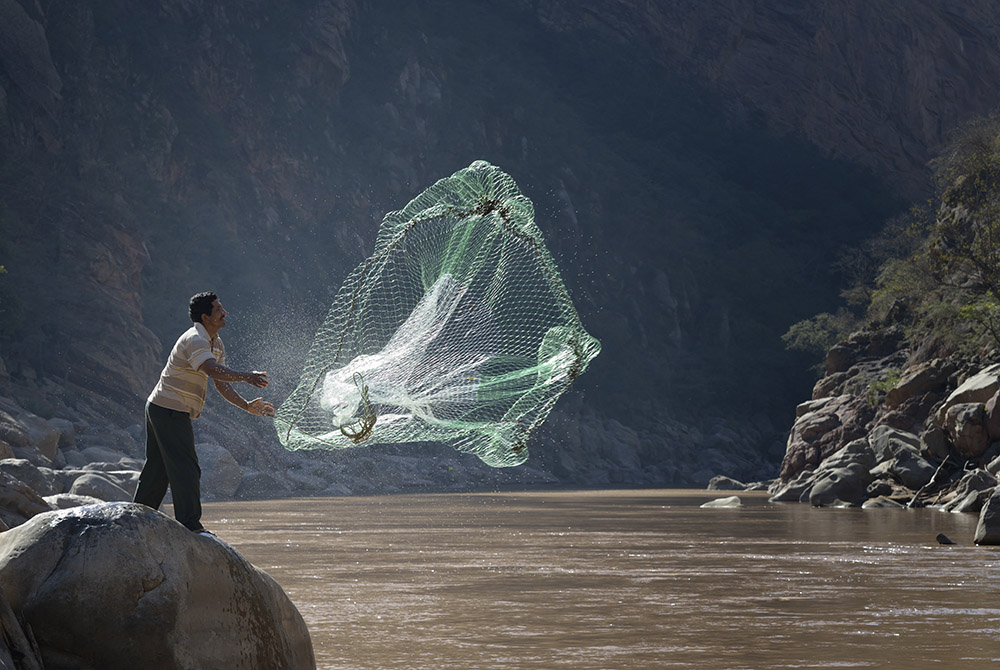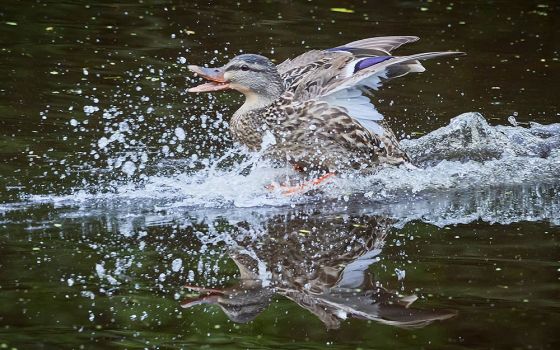
Tomás Rivero casts his fishing net into Bolivia's Pilcomayo River. (Paul Jeffrey)
Editor's note: This Season of Creation, join award-winning photographer Paul Jeffrey for "Lens on Creation" as he examines the world through the lens of his camera and his faith. Sign up here to receive Jeffrey's reflections in your inbox every Monday, Wednesday and Friday from Aug. 31 to Oct. 4.
I hate that old saying about how if you want to feed a poor person forever, teach them to fish.
The problem, as I've witnessed around the world, is that the rich may fence off the fishing grounds. Or a factory might pollute the water, leaving the fish sick and dying.
That's the problem Tomás Rivero faces. I met him as he cast for fish on the Pilcomayo River outside of Villamontes, Bolivia. A leader of the Union of Pilcomayo River Fishers, he has become an advocate for cleaning up the river, which has been plagued by contamination from upstream mining and road construction, even though his fishing place is located inside the protected Aguaragüe National Park.
Pollution doesn't respect arbitrary borders, and there was little Rivero could do to stop the contamination, which originated, in some cases, hundreds of miles upstream.
Fortunately, others could do something. The year after I met him, I traveled to mines near Potosí, Bolivia, where a group of church activists had joined with scientists from Tomás Frías University to monitor abandoned mines in the area. When they identified problems with high levels of toxic acid runoff, they alerted authorities. When that failed to change things, they resorted to naming and shaming the polluters, forcing several mine owners to take action to mitigate their dangerous pollution.
Stewardship of our threatened environment often involves working together with others who live far away. Sharing one common planet brings us close as we work to heal the Earth.
For reflection and action:
Pollution from industrial sites like mines, oil refineries, factory farms and manufacturers disproportionately affects people of color and people whose incomes do not allow them to move away from the contamination. Look on this map of toxic sites to find the place where you live. Is there a contaminated site close to you of which you were unaware? Do people live nearby? Are they aware of the hazard? What action can you or your faith community take to support them?
[Paul Jeffrey is a founder of Life on Earth Pictures and lives in Oregon. You can follow him on Instagram.]
Advertisement






